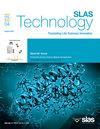Application of conjugated polymer nanocomposite materials as biosensors in rehabilitation of ankle joint injuries in martial arts sports
IF 2.5
4区 医学
Q3 BIOCHEMICAL RESEARCH METHODS
引用次数: 0
Abstract
In order to understand the application of conjugated polymer nanocomposites as biosensors in the rehabilitation of ankle joint injuries in martial arts, the author proposes a study on the application of conjugated polymer nanocomposites in the rehabilitation of ankle joint injuries in martial arts. Firstly, in martial arts training, the incidence of ankle joint injuries is relatively high. In order to prevent and reduce ankle joint injuries, high-intensity martial arts training should be used to evaluate the degree of ankle joint injuries in a timely manner using an ankle joint injury assessment model. Secondly, a Firefly algorithm based modeling method for the evaluation of ankle injury in high-intensity martial arts training is proposed. Finally, 180 questionnaires were distributed and 150 were collected. Three incomplete questions were removed, resulting in 130 valid questions with a yield of 90. The firefly algorithm has been used to assess ankle injuries and to characterize different types of combat shooting in high-intensity exercise competitions. received ankle injury index assessment combat performance. A chaotic sequence is used to fire and established a standard measurement of effort for combat ankle injuries. The proposed solution has been scientifically proven to improve basketball performance levels.
共轭聚合物纳米复合材料作为生物传感器在武术运动踝关节损伤康复中的应用。
为了了解共轭聚合物纳米复合材料作为生物传感器在武术踝关节损伤康复中的应用,笔者提出了共轭聚合物纳米复合材料在武术踝关节损伤康复中的应用研究。首先,在武术训练中,踝关节损伤的发生率相对较高。为了预防和减少踝关节损伤,在进行高强度武术训练时,应采用踝关节损伤评估模型及时评估踝关节损伤程度。其次,提出了基于萤火虫算法的高强度武术训练踝关节损伤评估模型方法。最后,共发放问卷 180 份,回收 150 份。删除了 3 个不完整的问题,最终得到 130 个有效问题,有效率为 90%。萤火虫算法已被用于评估高强度运动竞赛中的踝关节损伤和不同类型实战射击的特征。收到的踝关节损伤指数评估实战表现。混沌序列用于射击,并建立了战斗踝关节损伤的努力标准测量。科学证明,所提出的解决方案可提高篮球运动水平。
本文章由计算机程序翻译,如有差异,请以英文原文为准。
求助全文
约1分钟内获得全文
求助全文
来源期刊

SLAS Technology
Computer Science-Computer Science Applications
CiteScore
6.30
自引率
7.40%
发文量
47
审稿时长
106 days
期刊介绍:
SLAS Technology emphasizes scientific and technical advances that enable and improve life sciences research and development; drug-delivery; diagnostics; biomedical and molecular imaging; and personalized and precision medicine. This includes high-throughput and other laboratory automation technologies; micro/nanotechnologies; analytical, separation and quantitative techniques; synthetic chemistry and biology; informatics (data analysis, statistics, bio, genomic and chemoinformatics); and more.
 求助内容:
求助内容: 应助结果提醒方式:
应助结果提醒方式:


